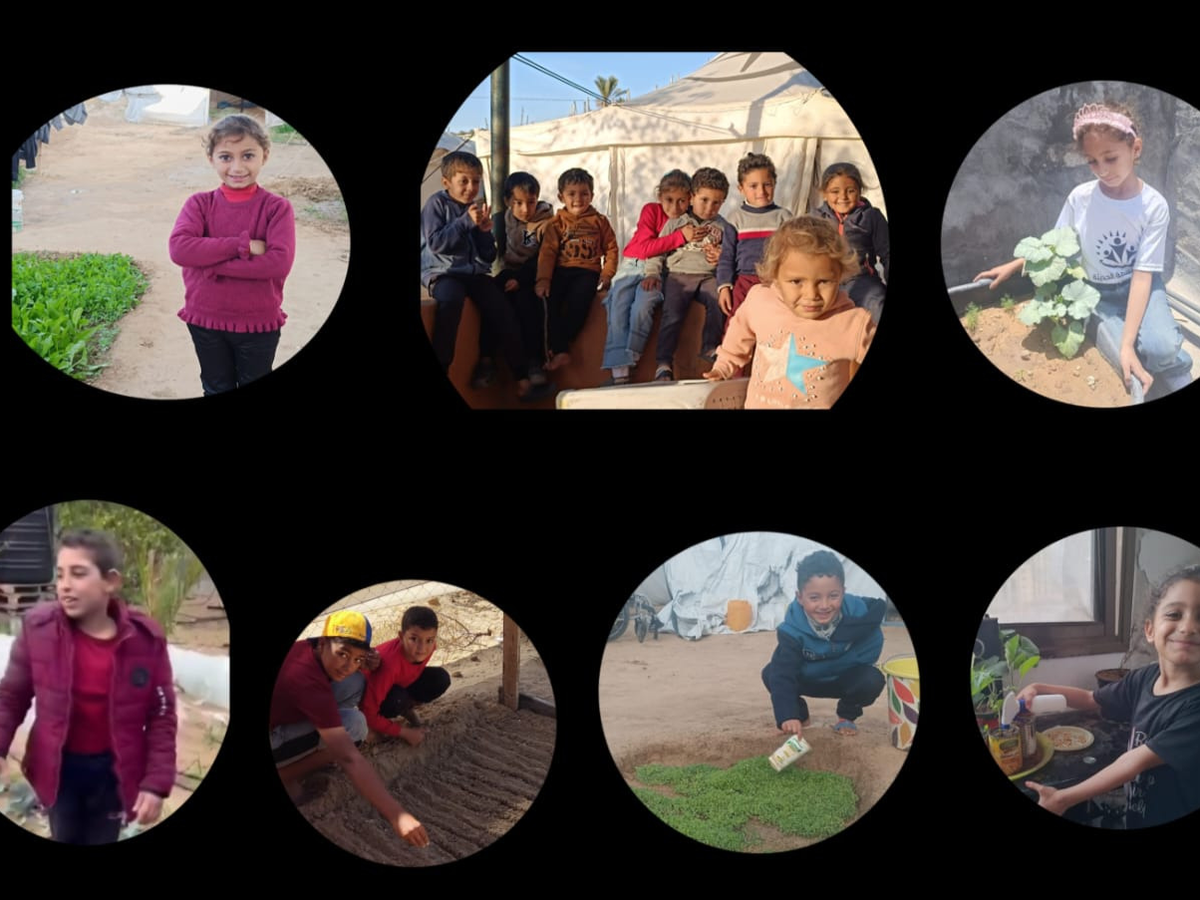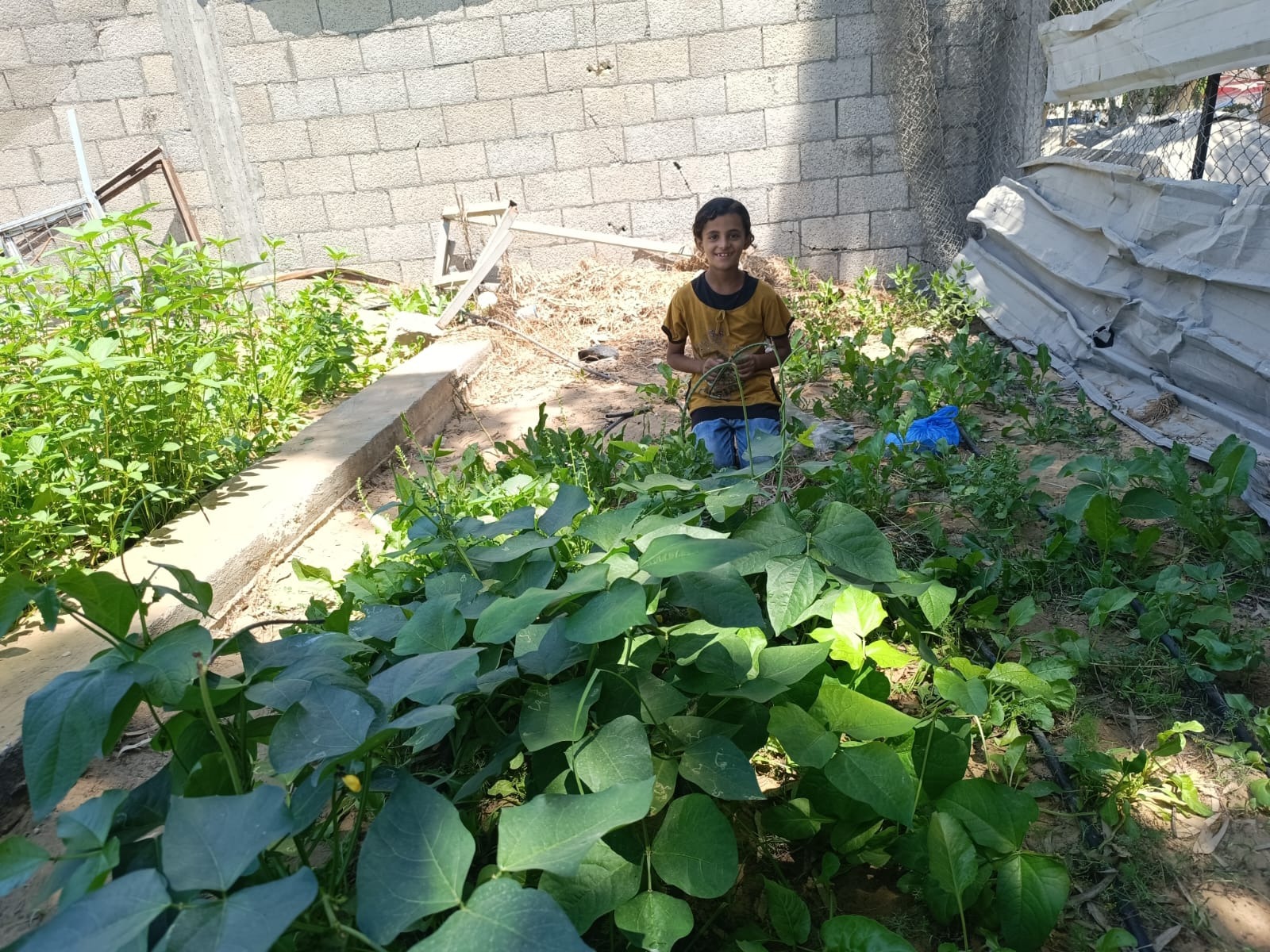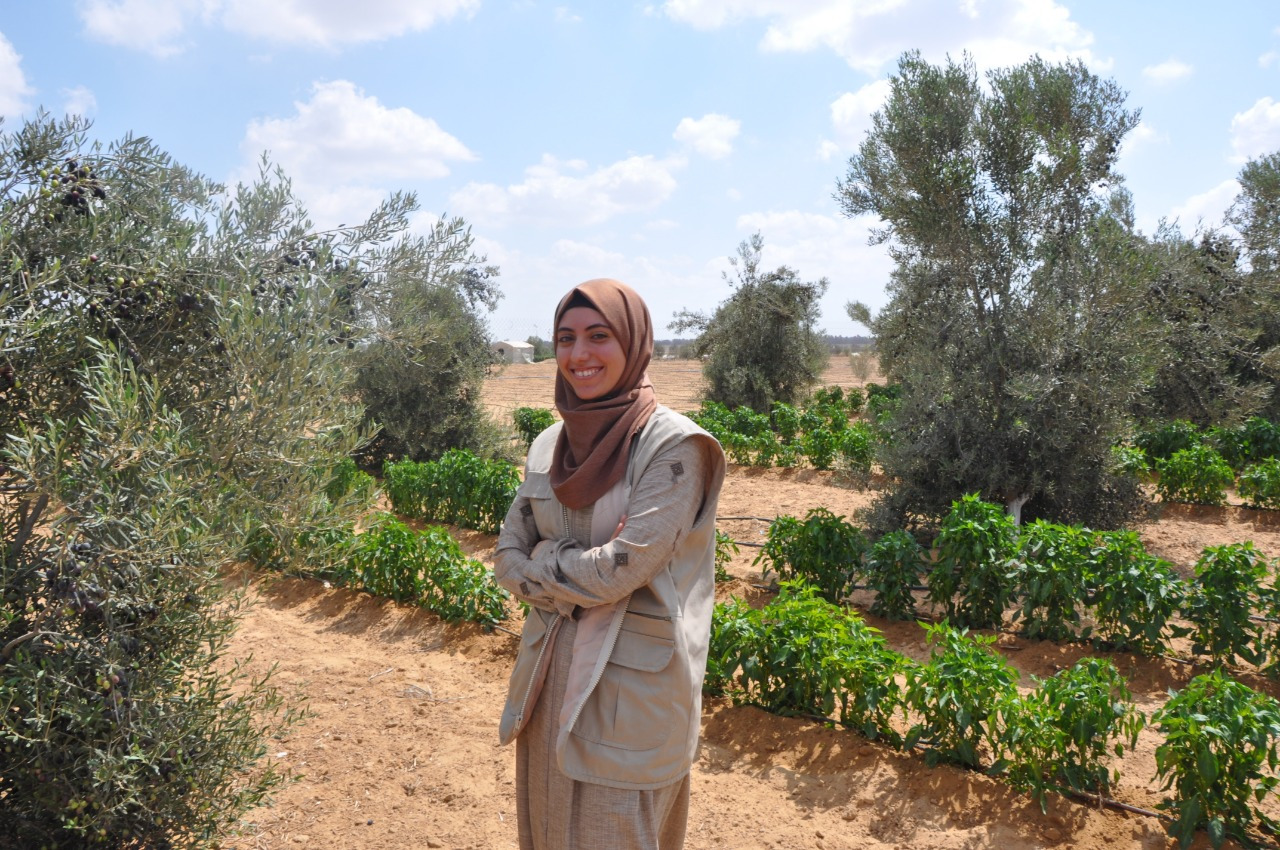Hi, I'm Philippe, a French environment journalist based in Lebanon. I'm helping Samar Abo Saffia to launch a new project: planting fruits and vegetables on rooftops and between displacement tents, with the help of children whose education got interrupted and are now reclaiming some hope.
She also gives urban farming workshops to mothers and women of Gaza. This initiative was named “Green Camps”, with the aim of feeding their families and communities, while Gaza is facing starvation. I've been in touch with Samar since the beginning of the war, organizing interviews and following her displacement. Now, she asked me to help her and her colleagues with this GoFundMe.
Please help them survive starvation - and rebuild Gaza's future !
UPDATE - CEASEFIRE:
Since October 10, a ceasefire has taken place in Gaza, leading to a partial stop of the conflict and bombardments (although violations are ongoing). In this context, Samar has moved to Deir el-Balah with her husband, and is now cleaning and planting destroyed land.
She is effectively helping Gaza restore its agriculture, food sovereignity and future. But she needs your support, as imported agricultural material (fertilizer, seeds, machines) remain extremely expensive hard to find.
Here is a statement that Samar wrote:
The Green Camps Initiative is an agricultural initiative founded on January 1, 2024, during the October 7th War on Gaza.
The initiative aims to alleviate the suffering of the Gaza Strip's residents and bolster their resilience with minimal resources.
The people of Gaza endured one of the greatest tragedies in history during this war, losing their homes, children, and livelihoods. They clung to hope every day, forced to flee their homes and live in tents. Their children were deprived of their right to education, as some schools were destroyed and others converted into shelters. This was compounded by the severe famine that gripped the population.
It was in this context that the Green Camps Initiative was launched, aiming to plant seeds of hope in the tents of the displaced, adding a touch of greenery to the grim landscape. It also provided children with access to basic life skills and a source of fresh vegetables, given the destruction of all agricultural land.
With the help of GoFundMe funding, we were able to provide seeds and equipment to some individuals to cultivate their tents and provide them with the bare necessities of life.
The Future of Green Camps:
After the ceasefire, the return of displaced people to their homes, the return of children to their schools, and the availability of food, we turned our attention to clearing and rehabilitating the agricultural land that had been used for displacement camps, making it suitable for farming again.
I hope you can help us raise funds so we can complete the work properly.
The main objectives are:
1) Achieving food sovereignty to prevent famine, promoting urban agriculture, and enhancing resilience during crises to ensure daily food security for children and families.
2) Providing a minimum amount of fresh vegetables to the displaced people in the Gaza Strip.
3) Recycle metal packaging in agriculture instead of collecting and
burning it.
4) Involve children in the planting process to teach them something
new.
5) Trying to add an environmental aesthetic in the midst of destruction.
Here is what Samar wrote about the "Green Camps" project:
My name is Samar Ahmed Abu Safia. I am 29 years old with a masters' of environmental science. Before the war, I worked with several local institutions, including the University College of Applied Sciences in Gaza, the Ministry of Agriculture for a women's empowerment program and then as a Head of the Modern Agriculture Department, as well as with the FAO.
When the war broke out, my work with the Ministry of Agriculture was halted. However, I engaged in humanitarian work, distributing food baskets and emergency aid. Due to the extreme danger of fieldwork and forced displacement, I was forced to stay in a tent in a displacement camp. To make use of my time, I started writing articles for local media about the food crisis in Gaza during the war.
However, after the situation deteriorated and access to agricultural areas became difficult, I established the tent planting initiative called "Green Camps" and began communicating with agricultural and environmental institutions and farmers to provide some seeds and purchase some of them.
When I obtained the seeds, I began planting them next to the tents and guiding the displaced people nearby to plant, giving them seeds and guidance for free. I also created a tent planting page on Facebook and Instagram to encourage people to continue.
When we returned to Gaza during the last truce, I found my house completely burned, but the roof was still intact and the front garden was fine. I worked hard to plant it, and used the remaining tools I had to grow the seeds on the balcony. I then transferred them to agricultural pots on the roof and next to the house.
But I was forced to flee once again when Israeli’s military tanks arrived, leaving the crops behind to be destroyed.
Still, I refused to give up. In my ninth displacement location, I received vegetable seeds from a local organization and started farming again. There, I reconnected with women farmers I had worked with before and helped them secure farming inputs and learn how to cultivate crops next to their tents. After three months, they were able to harvest spinach and arugula and some other vegetables. We now would like to expand this project to 10 spots in displacement camps all over the Gaza Strip.
Follow them on Facebook and on Instagram !
Here is more detailed information about the project and what the funds are needed for:
We as Gazans and farmers did not choose to leave our lands and resort to means of adaptation, but the severe conditions pushed us to try to look for alternatives.
The issue began with the invasion of the eastern line, which is the main green line in the Gaza Strip, and the displacement of more than 50,000 farmers living on the periphery of the Gaza Strip. After that, the invasion and destruction of the most agricultural places such as north of Beit Hanoun and the incursion into Khan Younis Governorate. No agricultural hand or water well was spared from the destruction of the occupation, and the confinement of 2.5 million of people within the limits of 5% of the area of the Gaza Strip, the Mawasi strip, caused another environmental disaster and the depletion of the resources of this area and the pollution of all its sources.
All of the above has caused the loss of 170,000 agricultural dunams [170,000 hectares] that would have covered the needs of the population and added an excellent income to the Gaza Strip economy.
Because the Israeli occupation did not limit itself to destruction, killing and displacement, it followed a policy of starvation by imprisoning Gazans without any recourse to food, hence the idea of the project.
The idea: Looking for alternatives to the famine challenge was to plant small plots of land next to the displaced people's tents to feed our children's hunger.
It aims to use agricultural alternatives such as searching for indigenous seeds in light of the fact that no imports of such seeds are allowed, and returning to the use of organic alternatives in plant treatment.
Our aim is achieving food sovereignty to prevent famine, promoting urban agriculture, and enhancing resilience during crises to ensure daily food security for children and families.
What are the initiative's main activities?
- Finding funding
- Targeting 10 shelters in areas where work is allowed
- Purchasing equipment for school rooftop planting
- Coordinate with the shelter's delegates to conduct workshops.
- Involving women and children in the planting process
- Allocate an administrator for irrigation and follow-up
- The agricultural engineer is a continuous periodic supervisor of the
process
- The harvested product is periodically distributed to the families in
the shelter center.
- They can be sold for a nominal fee to replant them.
- Media documentation
Who is the target group of the initiative?
Women and children: 30 women and 20 children are targeted from
each shelter to teach them how to grow plants.
Costs for 10 urban gardens = 10,000€
- 10 water tanks = 3,000€
- 10 water sprayers = 300€
- 200 Plant pots = 2,000€
- Soil = 3,000€
- Seedlings = 1,000€
- Fertilizers = 700€
I will collect the funds and send them to Samar via a Koweiti bank account.
Every little bit can help ! Thank you for your steadfast support.






